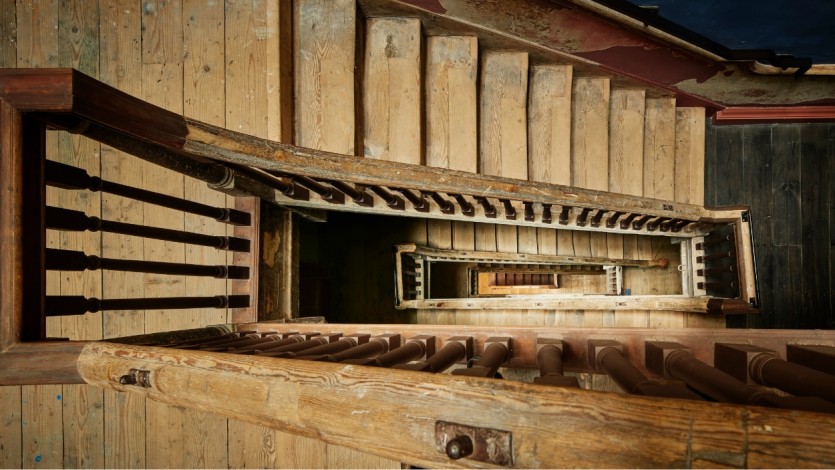Exhibition Policy at 14 Henrietta Street
StoriesPublished 16 August 2024

A museum’s Exhibition Policy outlines the type of collection it has. It describes the collection’s unique qualities, the ways it relates to the type of museum it is and how the collection is used in exhibitions. Museum collections are often made up of physical objects.
14 Henrietta Street is not a museum in the traditional sense: it doesn’t exist just to display objects or to capture a building in one period of time. It is a place that is living and breathing again after a long time lying dormant and derelict, a place that can now remember, evolve and create new memories for its visitors. This is reflected in the museum’s collection. Rather than being solely made up of physical objects, 50% of our collection is made up of the building itself, 25% is our oral history collection, 20% physical objects, and 5% artistic responses.
The building
The building is a major part of our collection. Its historical fabric has been carefully preserved and conserved so that it tells the stories of multiple layers of history and the many individuals who lived here. From the grand Georgian plasterwork throughout the building that sits in contrast to Reckitt’s Blue and Raddle Red paint colours that survive in the stairwells, colours that are synonymous with Dublin tenements, the story of the building’s shifting fortunes are etched into its walls.
Oral histories
These are first-hand memories and handed-down stories collected from former tenement residents and their families. They inform the guided tour and bring the building to life. In producing the museum experience, historians worked closely (and continue to do so) with former residents, ensuring the human stories are as prominent as the documented historical facts. This museum is as much about what the participants impart to us as what we impart to them. We actively encourage storytelling and questions from our visitors, allowing their memories and knowledge to further enrich the experience.
Physical artefacts
These include a selection of objects from the building’s ‘tenement era’ (c.1870s to 1970s), many of which have been gifted by families of former tenement residents over the course of the building redevelopment project. The collection also includes a large historic Georgian mahogany Bed, which is on loan to the Museum and forms the focal point of one of the rooms. The bed belonged to Dr. Bartholomew Mosse, a local man who had the vision to build and fundraise for the first purpose-built maternity hospital in the world, located just around the corner from 14 Henrietta Street.
Artistic responses
These are artistic responses to the building in various media. In the bedroom visitors see an audio-visual projection of a specially commissioned poem by Irish poet Paula Meehan (who grew up in the tenements). The poem imagines the journey of the bed donated to the museum. Further along the tour in our playroom, traditional songs collected through an intergenerational workshop with local residents and sung by primary school children, fill the air.
Our Exhibition Policy forms part of our application to the Museum Standards Programme for Ireland. It works side by side with our Education Policy, which outlines the many ways that people engage with the collection.
 ShopBook Now
ShopBook Now